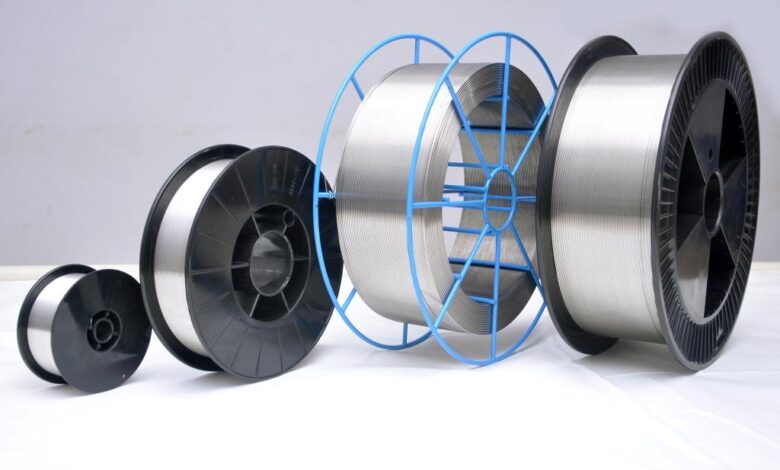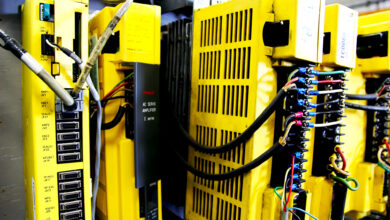IoT App Development in Industrial Automation: Unleashing the Power

Industrial automation in the world is experiencing a continuous transformation and it is all due to IoT (Internet of Things) app development power. By integrating IoT technology into industrial processes, businesses are unlocking unprecedented levels of efficiency, productivity, and intelligence. IoT apps in industrial automation bridge the gap between physical machinery and digital technology, allowing for real-time monitoring, data collection, and automated control of industrial equipment. This integration leads to optimized production workflows, enhanced equipment performance, and predictive maintenance capabilities.
Moreover, IoT app development fosters a connected industrial environment, where machines communicate with each other and with human operators, paving the way for smarter decision-making and minimizing downtime. The expansion of IoT with industrial automation not only smoothens operations but also opens up new opportunities for innovation and growth in the manufacturing sector.
What is IoT Industrial Automation?
IoT industrial automation refers to the coordination of Internet of Things (IoT) technology into industrial procedures to enhance efficiency and automation. This concept includes utilizing IoT devices such as sensors, actuators, and networked machinery to gather and observe data from industrial environments. The insights gained from this data enable automated decision-making, predictive maintenance, and optimized production processes.
App development plays a crucial role in this ecosystem, providing the interface for monitoring and controlling the automated systems, and turning vast amounts of data into actionable insights. This integration of IoT technology transforms traditional industrial setups into smart factories, leading to increased productivity, reduced operational costs, and improved safety.
Benefits from the Internet of Things industrial automation
The Internet of Things has had a great effect on different industries by permitting more effective and automated operations. Here are seven key industries benefiting from IoT industrial automation:
Manufacturing
The manufacturing industry is perhaps the most significant beneficiary of IoT industrial automation. IoT technology has enabled smart manufacturing practices where machines and equipment are interconnected and communicate with each other. This interconnection permits real-time monitoring of productive lines, resulting in increased efficiency and improved product quality. Predictive maintenance, powered by IoT, also helps in reducing equipment failure and prolonging machinery life.
Healthcare
IoT integration in healthcare has proved to be beneficial, especially in patient care and hospital administration. IoT devices are capable of doing constant monitoring of the patients, which results in improving the quality of care. IoT systems are so powerful that they can alert medical staff if any difficult condition takes place in a patient’s condition. On the part of the IoT app development company, healthcare apps have been made personalized for the patients making it easier to manage their health and thus improved with better results in terms of quality.
Agriculture
The agriculture sector is experiencing a digital transformation with the integration of IoT. Smart farming techniques involve using sensors for soil moisture, temperature, and crop health monitoring. This data assists farmers in making important decisions regarding irrigation, fertilization, and harvesting. IoT technology also enables automated equipment like self-driving tractors and drones for field surveillance, significantly improving crop yield and reducing labor costs.
Transportation and Logistics
IoT has transformed the transportation and logistics industry by enabling real-time tracking of goods and vehicles. This visibility helps companies optimize routes, reduce fuel consumption, and enhance delivery times. Moreover, IoT technology assists in the predictive maintenance of vehicles, reducing the likelihood of breakdowns and ensuring timely deliveries.
Retail
The applications of IoT technology in the retail industry include inventory management, customer examination, and improving the store shopping experience. Smart shelves are an inventive technology in the retail sector, improving the way stores manage inventory and interact with customers. These shelves are furnished with refined features like weight sensors and RFID labels, which work together to keep track of stock levels in real-time.
Energy and Utilities
In the energy sector, IoT technology aids in monitoring and managing energy consumption efficiently. Smart grids powered by IoT can balance energy loads and detect faults in the system instantaneously. This expands the proficiency of force transmission as well as adds to joining the network of sustainable power sources.
Smart Cities
IoT industrial automation plays a pivotal role in the development of smart cities. IoT devices are used for traffic management, waste management, and improving public safety. By locating sensors throughout the city, data can be gathered on traffic flows air quality, and energy consumption contributing to an improved more sustainable urban lifestyle.
IoT Effect on Industrial Automation
The influence of the IoT on industrial automation is powerful and has many facets. Below are the most important elements given of how IoT is reshaping the landscape of industrial automation:
Real-Time Data Gathering and Procession
One of the most important changes that IoT has made to industrial automation is data collection. IoT devices, such as sensors and cameras, deployed across industrial facilities, gather vast amounts of data on machine performance, environmental conditions, and production processes. This continuous stream of data provides invaluable insights, enabling factories to optimize operations, improve efficiency, and reduce downtime. Real-time data analysis helps in making informed decisions, foreseeing potential issues, and responding promptly to changing conditions.
Predictive Maintenance
IoT technologies have revolutionized maintenance strategies in industrial settings. By continuously monitoring equipment conditions, IoT systems can predict when machines are likely to fail or need servicing. This predictive maintenance approach prevents unexpected breakdowns, extends the life of equipment, and saves costs associated with reactive maintenance. Implementing predictive maintenance routines leads to higher uptime and productivity, as maintenance can be scheduled during non-critical operation times.
Enhanced Operational Efficiency
IoT-driven industrial automation directly contributes to enhanced operational efficiency. By automating routine tasks, optimizing resource allocation, and reducing manual intervention, IoT enables industries to achieve higher throughput with lower input costs. IoT systems facilitate the synchronization of various components of the production process, ensuring that each segment operates at peak efficiency and in harmony with others. This streamlined operation minimizes waste, enhances product quality, and boosts overall productivity.
Customization and Flexibility in Production
IoT enables a higher degree of customization and flexibility in production processes. In response to consumer demands for personalized products, IoT systems allow for quick reconfiguration of production lines to accommodate different product designs and specifications. This adaptability is essential in today’s market, where customer preferences and trends change rapidly.
Integration of Development Services
The expansion of IoT in industrial automation has opened new doors for Android app development services. Companies looking to hire Android app developers now concentrate on creating applications that connect with IoT devices, providing users with remote control and monitoring capabilities. These apps provide practical dashboards to manage industrial processes, receive alerts, and observe data on the go, enhancing decision-making and operational flexibility. The interaction between IoT devices and custom Android applications indicates a new era in industrial automation, where mobility and accessibility are key.
Worker Safety and Ergonomics
The combination of IoT in industrial automation has important applications for worker safety and ergonomics. IoT devices can monitor environmental conditions, detect hazardous situations, and ensure compliance with safety regulations. Wearable IoT devices can track workers’ health indicators and alert them or supervisors to potential health risks. This focus on safety not only protects employees but also reduces the likelihood of accidents that could disrupt production.
IoT is revolutionizing industrial automation, offering unprecedented levels of efficiency, productivity, safety, and customization. Its ability to collect and analyze data in real-time, predict maintenance needs, enhance operational efficiency, improve worker safety, provide production flexibility, and integrate with mobile applications, is transforming the industrial landscape.
Conclusion:
The integration of IoT in industrial automation marks an important turning point in manufacturing and production procedures. By using the power of real-time data, predictive maintenance, and enhanced operational efficiency, IoT technology is not just optimizing current processes but also paving the way for future innovations. It supports safer work environments, permits production flexibility, and enhances the interconnectivity of industrial systems through modern mobile applications. As industries continue to change with these technological developments, the full future of IoT in changing industrial automation becomes increasingly evident, promising a smarter, more efficient, and more sustainable industrial future.




